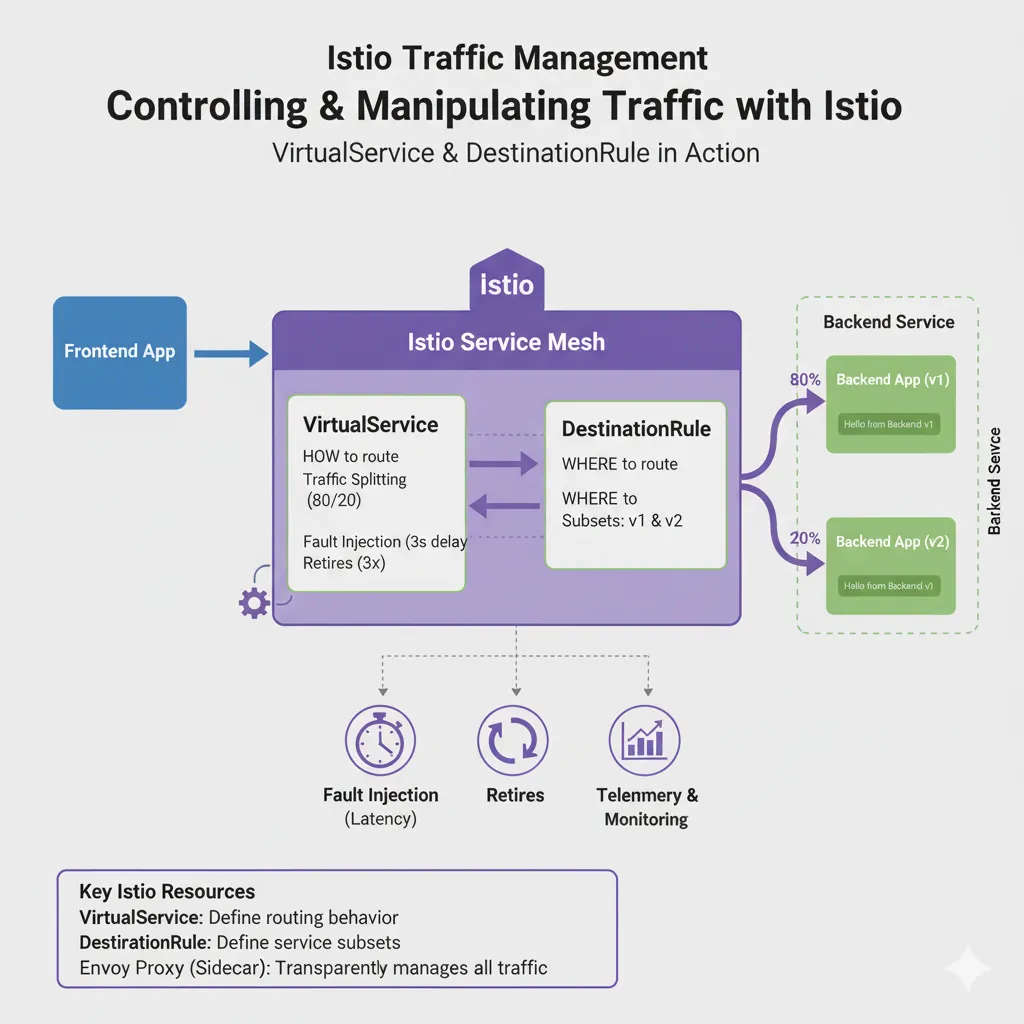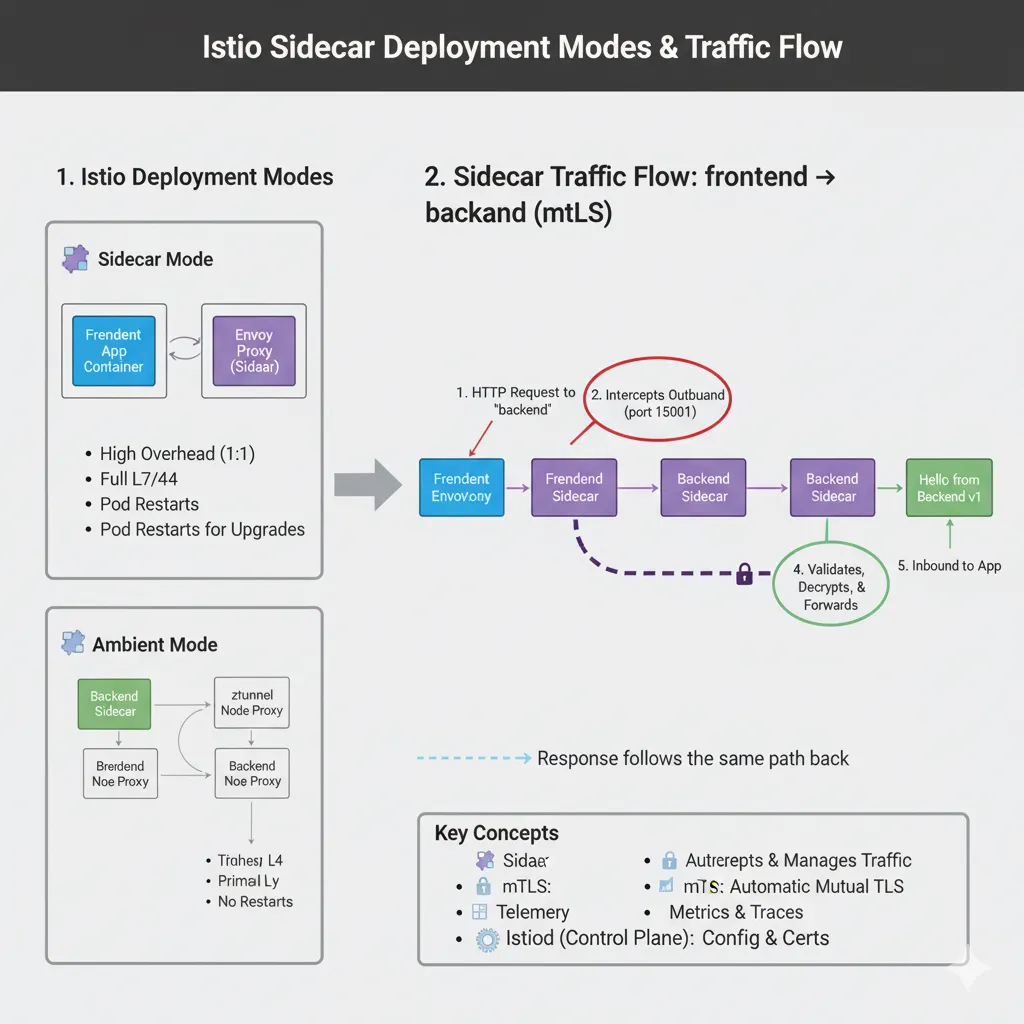Istio Hands-on Part 7 - Security with mTLS and AuthorizationPolicies
⬅ Back to Intro | Next → Part 8 - JWT and End-User Authentication 💡 This post is part of my Istio Hands-on Series — a practical journey into Kubernetes Service Mesh. Each post builds on the previous one with hands-on labs, real command outputs, and clear explanations aimed at learning Istio by doing, not just reading. Objective In this post, we’ll: Enable and verify mutual TLS (mTLS) between services Apply AuthorizationPolicies to control access Test what happens when policies block or allow traffic By the end, your frontend–backend app will communicate securely - every request encrypted and identity-verified. ...


